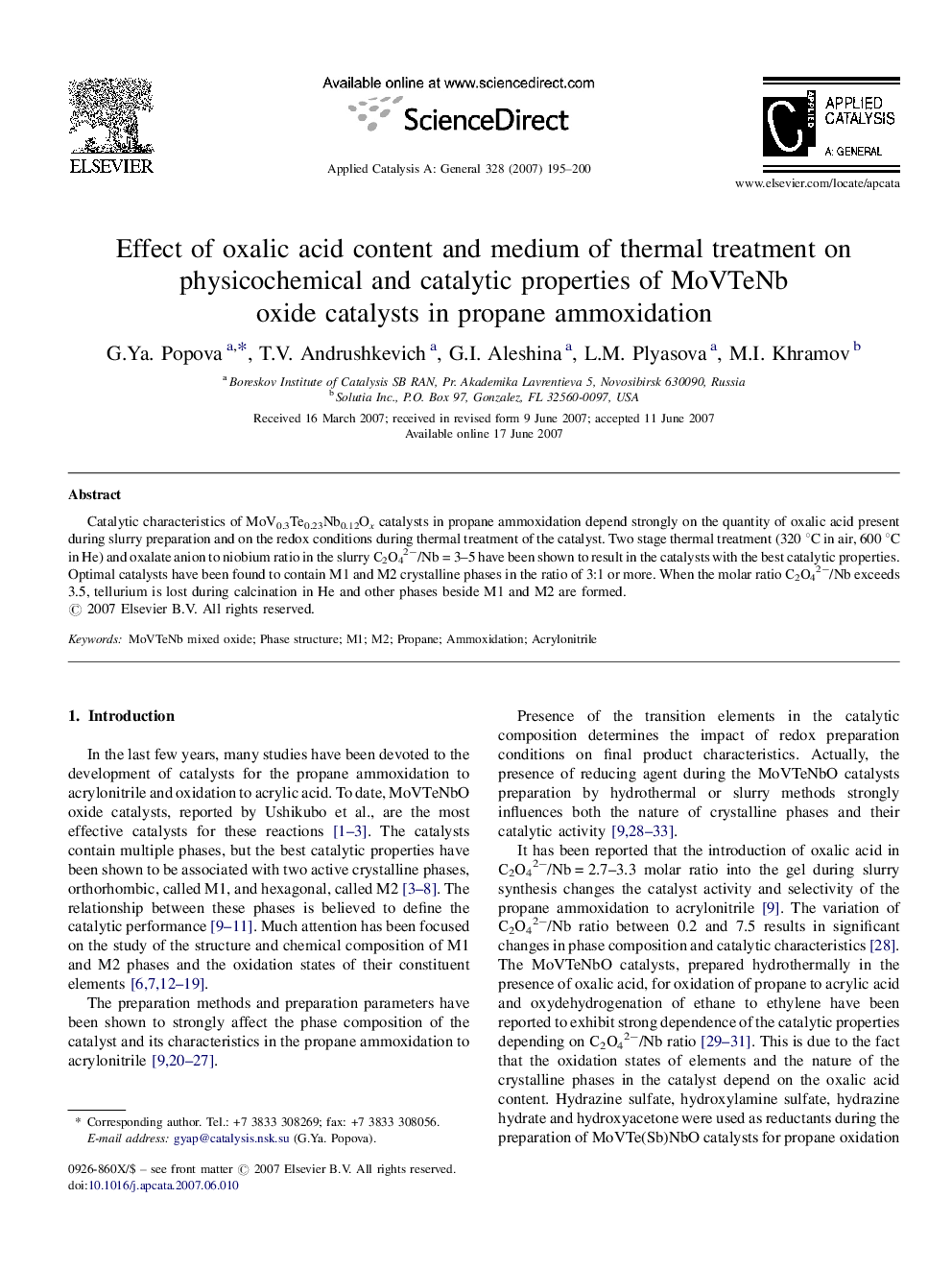| Article ID | Journal | Published Year | Pages | File Type |
|---|---|---|---|---|
| 43549 | Applied Catalysis A: General | 2007 | 6 Pages |
Catalytic characteristics of MoV0.3Te0.23Nb0.12Ox catalysts in propane ammoxidation depend strongly on the quantity of oxalic acid present during slurry preparation and on the redox conditions during thermal treatment of the catalyst. Two stage thermal treatment (320 °C in air, 600 °C in He) and oxalate anion to niobium ratio in the slurry С2О42−/Nb = 3–5 have been shown to result in the catalysts with the best catalytic properties. Optimal catalysts have been found to contain M1 and M2 crystalline phases in the ratio of 3:1 or more. When the molar ratio С2О42−/Nb exceeds 3.5, tellurium is lost during calcination in He and other phases beside M1 and M2 are formed.
Graphical abstractCatalytic characteristics of MoV0.3Te0.23Nb0.12Ox catalysts in propane ammoxidation depend strongly on the quantity of oxalic acid present during slurry preparation and on the redox conditions during thermal treatment of the catalyst. Two stage thermal treatment (320 °C in air, 600 °C in He) and oxalate anion to niobium ratio in the slurry С2О42−/Nb = 3–5 have been shown to result in the catalysts with the best catalytic properties. Optimal catalysts have been found to contain M1 and M2 crystalline phases in the ratio of 3:1 or more. When the molar ratio С2О42−/Nb exceeds 3.5, tellurium is lost during calcination in He and other phases beside M1 and M2 are formed. Figure optionsDownload full-size imageDownload as PowerPoint slide
